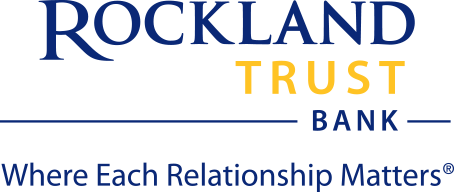Written by Steve Andrews

Hope in Time for the Holidays
One of the things for which we can be thankful for this holiday season is that the markets appear to be settling down after a crazy month in October. We cautioned last month that September and October have a long history of giving investors fits. This year was no exception. Interest rates soared, lifting the yield on the 10-year Treasury above 5.00%, and 30-year mortgage rates above 8.00%. In tandem, concerns grew over how investors would digest the tsunami of new debt coming to market to finance the ballooning federal budget deficit. The US Treasury recently announced that it plans to borrow $816 billion this quarter (Q4), following the $1 trillion it borrowed in Q3, and expects to borrow $1.6 trillion over the next 6 months. As of the end of September, publicly traded US Treasury debt rose to a record $25.7 trillion – up over $9 trillion (+ 54%) since the COVID pandemic struck.
Inflation Trends and Impacts
This month, the markets made it clear that investors are getting more comfortable with the notion that the Fed is done raising rates. That last July’s 0.25% hike may have been the last for this cycle. Just before Veteran’s Day, Fed Chair Jerome Powell said that the Fed won’t hesitate to tighten US monetary policy further if needed to contain inflation. It seems to us that the Fed is repeating the same mantra – not wanting to give the impression that they are satisfied with current rates of inflation.
Yet disinflation continues. The CPI data for October shows that consumer prices were unchanged from September and were up 3.2% from October 2022 – both below expectations. “Core” CPI, which excludes volatile food and energy costs, rose 4.0% from a year ago – the smallest increase since September 2021 when inflation was just beginning to escalate. Meanwhile, Producer Prices (PPI) fell 0.5% in October.
Housing costs have kept inflation levels higher than they otherwise would be. When you exclude rent and mortgage payments, CPI rose just 1.5% in October. When you look outside the housing market, inflation has fallen below the Fed’s 2.0% target. New apartment construction is running at its highest level since the 1970’s, and new supply has been pushing rents lower over the past 12 months. This trend should continue to pull headline inflation back to the Fed’s target by Spring.
Not all Doom and Gloom
While the past few months were nerve wracking for investors, the markets seem to be anticipating better days ahead. Just think about where we were a year ago, with high inflation forcing the Fed to raise interest rates dramatically and, in the process, making the likelihood of a recession in 2023 all but assured. Yet, through mid-month, the very interest-rate-sensitive NASDAQ is up over 35%, the S&P 500 is up 18%, and the Dow is up nearly 5% since the first of the year. GDP grew 3.9% in Q3 and is on track to grow either side of 2% in Q4 and, while there still exists the possibility of a recession next year, as there was this year and last, it’s also quite possible that we could keep kicking that can further down the road as we did for nearly a decade from 2010 - 2020.
We have short memories, particularly of bad times, so it’s easy to forget just how badly we messed up our economy by shutting it down for the better part of 2 years. It took a long time to put the jigsaw puzzle that is our economy back together again, but all the pieces are back in place. Disrupted supply chains have mended, as evidenced by the New York Fed’s Global Supply Chain Pressure Index which recently tied the lowest level of stress on record going back to 1998. Travel (both personal and business) and entertainment is back to pre-COVID levels, with business travel spending running ahead of expectations and set to rise above pre-COVID levels soon.
Consumer Spending & Consumption
US consumers continue to do the heavy lifting to keep the economy moving forward, despite the steady diet of bad news from the media, including the recent conflict in Gaza, pulled consumer sentiment lower in the first two weeks of November. While consumers remain “satisfied” with their current situation - they worry about how things will look in 6 months – yet they still spend. But analysts and economists worry nonetheless: US consumers may be spending now, but will they be able to keep it up six months to a year down the road? It’s certainly something to ponder, but wage gains have moved ahead of inflation over the past 9 months and consumers still have a bit of the COVID “stimulus” money handed out by the government left to spend. Meanwhile, US Household Net Worth hit a new record in Q2 and Q3 data will arrive in a week or so. US job growth did slow in October but the three-month moving average for job gains was 204,000 – close to the prior three-month period at 207,000 – while the six-month moving average is 206,000, so US employment growth hasn’t changed all that much since the Spring and job openings remain above 9 million.
US non-farm payroll employment rose to a record high of 156.9 million during October, up 1.9% from a year ago and this is nourishing consumers’ purchasing power. Many of the industries that are expanding their payrolls (health care, social and financial services, and leisure & hospitality) are seeing strong demand for their services by Baby Boomers who sit on over $75 trillion in net worth and are willing to spend. In addition, unearned personal income in the US from sources like proprietors’ income, rents, dividends, and interest payments, rose to a new record in September at $6.5 trillion.
In Conclusion
We’re not surprised that the markets (stocks & bonds) are trying to put September and October behind them, but we’re not foolish enough to think that the bumpy ride is over. The Fed may or may not be done raising rates but global strife, rising federal debt, and uneven economic growth, among other issues, will keep investors’ nerves frazzled. On the positive side, the technological advances in biotech, artificial intelligence, nanotechnology, and robotics, that were just beginning to hit their stride when we shut down our economy, are falling back into a rhythm that will boost productivity and economic growth in the months and years ahead.





